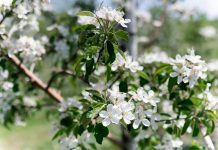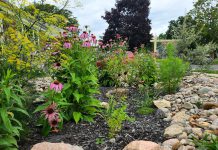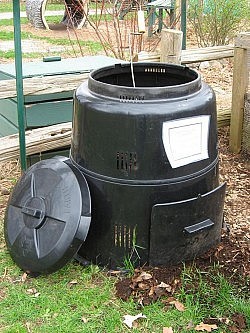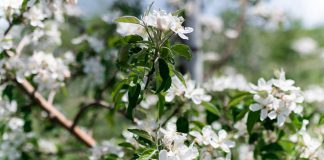I’m hesitant to proclaim it, given the recent wintry blasts we’ve experienced here in the Kawarthas, but I think we may have finally turned the corner into spring.
Over the weekend, when temperatures rose to near 10 degrees, it was evident the snow was rapidly disappearing and the brown landscape was finally revealing itself.
With the return of warmer days, we’re all starting to spend more and more time outside. Getting an early start on cleaning up garden beds or raking the yard are popular spring chores for many.
Even with ample snow still left to melt and mud quickly taking its place, I saw at least one neighbour out with a rake, already. Garden clean-up aside, a task that needs to be completed in the coming weeks is setting up composters for the year ahead.
For those new to composting, getting started is easier than you might think. The first and most obvious tool you’ll need is a composter. These can be obtained from the GreenUP Store and most hardware stores and garden centres.
Starting off small is a good idea, and if you find yourself running out of space, you can always add another composter later in the season.
Once you have your composter, the next obvious question is “Where do I put it?” Location is important, as it plays a role in how well the contents of your composter break down. Put your composter in a location that is easy for you to access, close to a water supply, and in a location that will get access to sunlight. A well-drained location is preferable.
Once you have your composter and have it set up in an appropriate location, it’s time to start using it. When you add material to your composter for the first time, think layers. Compost can be separated into two types: greens and browns. Greens include kitchen scraps like peelings, fruit scraps, and grass clippings. Browns can include items like coffee grounds, wood shavings, and hay. Creating alternating thin layers of each will ensure a balance of the nutrients you need, so that the compost process works efficiently.
Items to avoid putting into your composter include meat, fish, bones, fatty foods, and dairy products. These items will eventually break down, but have the potential to cause odours, which can attract pests like raccoons. Cat and dog waste, diseased plants, or plants with mature seeds should also be kept out of the composter.
Moisture and air also play important roles in the composting process. There should be just enough water in the compost so that if you pick a handful up and squeeze it, a few drops come out. Though they seem far away now, during hot and dry periods in the summer months, adding water may be necessary to ensure the compost process continues. If too much water is a problem, add drier materials, aerate, or leave the lid off during dry sunny days. Turning the compost every few weeks will ensure enough air is reaching the innermost material.
Adding a layer of garden soil now and then can also aid in the break down of material. The composter should be full of microorganisms including bacteria, fungi and worms to assist in the composting process. Adding soil will ensure these tiny creatures remain present.
It’s important not to rush the composting process. Depending on how the composter is managed, the process can take anywhere from a few months to a year to obtain garden ready compost. If you add large, unchopped materials, the process can take even longer. As the saying goes, patience is a virtue.
If you’re looking for a smaller quantity, the GreenUP Ecology Park sells it by the bucket. You’re just asked to bring containers to load and carry your black gold home with. Sales at the GreenUP Ecology Park begin in late April or early May, depending on weather conditions.
Composting is a great way to not only give our gardens the gift of a rich, nourishing addition to the soil but also reduce our waste. The more we compost the less waste we send to the landfill, prolonging its life and helping our environment. There’s no better time to start composting than the spring, so make an effort in the coming weeks to set up your own backyard composter.



























